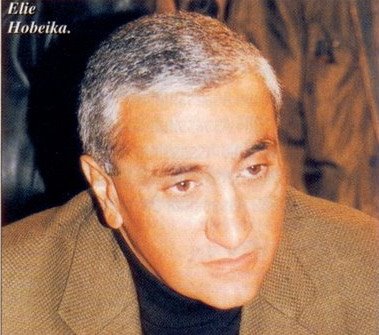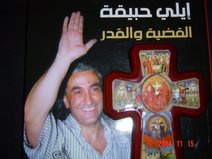
September , 2011 -- Operation Jaded Task story seen as "canard" by US embassy in Santo Domingo...
In 2004, this editor was informed that the February 2004 coup d'état launched against democratically-elected Haitian president Jean-Bertrand Aristide was carried out after the United States military and intelligence agents provided weapons and training to the Haitian coup plotters from the neighboring Dominican Republic. The operation, ostensibly to train and equip Dominican military forces, was code-named Operation JADED TASK.
The information gathered from confidential sources on JADED TASK was passed to former Representative Cynthia McKinney, who wrote in Counterpunch on March 19, 2004, the following: ". . . . according to this same source, some of the Dominican troops and Spanish and English-speaking paramilitaries trained by the U.S. during last year’s Operation Jaded Task in the Dominican Republic were fighting alongside Haitian rebels in the north and on the southern coast of Haiti. We are told further that Haitian government authorities intercepted vans carrying new M-16s across the border from the Dominican Republic. According to the report I have received, Haitian authorities began intercepting vans carrying the weapons from the Dominican Republic beginning last year, and shortly after the U.S. military delivered 20,000 M-16s to the Dominican Army."
This editor’s later book, “Jaded Tasks: Brass Plates, Black Ops & Big Oil.” is named for the covert Pentagon and CIA operation that removed Aristide in 2004. Later, Aristide was presented a signed copy of the book in South Africa with a note that states I hope he is rightfully restored to the presidency in Haiti. Earlier this year, Aristide's forced exile ended, much to the chagrin of the Obama administration, and he returned to Haiti.
Two recent U.S. State Department cables, the first sent from the U.S. embassy in Santo Domingo, Dominican Republic on March 2, 2004 and the second dated March 6, 2004, titled "Canard" and "Canard II," respectively, show how the U.S. embassy in Santo Domingo and the State Department overseer for the coup, Assistant Secretary of State for Western Hemisphere Affairs Roger Noriega, attempted to cover up the U.S. role in the coup against Aristide. The reference in "Canard" to a story in The Boston Globe was based on information on Jaded Task provided by this editor to the Globe's reporting staff.
UNCLAS SANTO DOMINGO 001361 SIPDIS
DEPT FOR TF1 - HAITI AND FOR WHA/CAR, WHA/PA, INL, PA; SOUTHCOM FOR PUBLIC AFFAIRS
E.O. 12958: N/A TAGS: PGOV HA DR
SUBJECT: CANARD; ALLEGED TRAINING OF HAITI INSURGENTS IN DOMINICAN REPUBLIC
¶1. Embassy advises that Boston Globe reporter Bryan Bender (e-mail bender@globe.com, tels 202-857-5060, cell 202-369-6856) drafted on February 29 a text based on allegations of unidentified sources (including one "Haitian official") that Haitian insurgents received training and weapons from U.S. Southcom/Special Forces training teams in Santo Domingo in 2003 during the Operation Jaded Task. Some were supposedly "under cover" of building hospitals and clinics. Allegation is that U.S. military shortly afterwards delivered 20,000 M-16s to the Dominican army and some were smuggled across to Haiti.
¶2. We understand that an intel agency referred this story to Southern Command public affairs for reply.
¶3. This story is close to 100 percent false. For the record and after checking within the Embassy, we note: - - Operation "Jaded Task" was scheduled for March 2003. This special forces training exercise is carried out every other year in a partner country in the hemisphere. The 2003 exercise was scheduled for Peru but when Peruvian authorities were unable to host, venue was changed to the Dominican Republic. Though some initial survey work was done, in fact the exercise did not repeat not take place. - - Two clinics and two schools were in fact repaired or built in May 2003 by Seabees on exercises in operation "New Horizons." - - Under the U.S. program for Foreign Military Financing (FMF), the U.S. has arranged to provide the Dominican military with 20,000 reconditioned M-16 A1 rifles, previously used by the U.S. National Guard. None of these -- repeat none -- has yet been delivered. - - The United States military has not at any time provided military training in the Dominican Republic for Haitians or for private contractor paramilitaries. - - It is true that in early 2003 Foreign Minister Tolentino Dipp asked the Embassy for details about planned military training, and the Embassy furnished this information. This occurred in the context of unfounded press reports alleging that U.S. forces would number in the thousands and that they would be engaged in tasks other than training.
KUBISKE
UNCLAS SANTO DOMINGO 001515 SIPDIS
SENSITIVE
DEPT FOR HAITI TASK FORCE, WHA/CAR E.O. 12958: N/A TAGS: MARR PGOV HA DR
SUBJECT: CANARD II: DOMINICAN RIFLES FOR HAITI
¶1. Secretary of the Armed Forces Soto Jimenez told the press on March 5 that the Dominican Republic has received no rpt no arms from the USG and commented that the figure of 3,500 weapons used in questions to WHA Assistant Secretary Roger Noriega might correspond to annual licensed imports of arms (of all types) for sale by registered gun shops in the country. These are not military weapons; they are pistols, revolvers, hunting rifles and shotguns (never rifles) for use by private security services. Import permits are issued by the military, are monitored by the military and are stored in military facilities until released to the authorized dealer. He said that recent Dominican military purchases of weapons have been limited to Galil rifles (Israel) and P-90 rifles (Belgium) for use by Dominican special forces and none were unaccounted for.
¶2. Embassy records confirm that the USG has not furnished any weapons to the Dominican government since 1991 (that case was for 1500 pistols). A current Foreign Military Financing (FMF) case will provide 20,000 refurbished M-16 1A rifles but none repeat none has yet been delivered; the first shipment of 2,300 units is being assembled in the U.S.
¶3. As for the weaponry used in Haiti, merchants conversant with trade on both sides of the border told Embassy members that Guy Philippe and his crew moved through 5 provinces in 2 days with little or no opposition and in small numbers. It is reported that two or three team members would arrive in a town with bullhorns, announce the impending arrival to bring out the population, and then Philippe would appear in the company of about a dozen men. We understand that the arms used on this movement and in the capture of Gonaives were largely shotguns, hunting rifles, and pistols.
¶4. Rumor indicates that many of Haiti's illicit weapons, especially the more sophisticated ones, enter through narcotics trafficking circuits from South or Central America.
HERTELL
----
It is noteworthy that Noriega states in "Canard II" that the U.S. provided "pistols, revolvers, hunting rifles and shotguns" to private security services, not the Dominican Army, and in the same cable, the embassy in Santo Domingo states that Haitian rebel leader Guy Philippe used "shotguns, hunting rifles, and pistols" in his assault on Gonaives, Haiti.
"Canard II" also states that Haiti's illegal weapons "enter through narcotics trafficking circuits from South or Central America." Noriega had a lot of experience in such matters. During the illegal Nicaraguan Contra wars of the 1980s, Noriega worked for the US Agency for International Development (USAID), which assisted in the CIA operations that saw the Contras' arms being paid for from proceeds from cocaine trafficked from Colombia and Panama. Another Noriega, former Panamanian president Manuel Noriega, no relation to Roger, was well aware of these operations. Manuel Noriega's knowledge is why he is being kept in a French prison, courtesy of a deal worked out between the Obama White House and French President Nicolas Sarkozy. Noriega was sent to a French prison after his release from a U.S. prison after serving his sentence for drug trafficking.
Canard states that am "intelligence agency" referred the story about Jaded Task to the US Southern Command in Miami for a reply. It is obvious that the CIA was engaged in damage control with the story about Jaded Task and the provision of U.S. weapons in the Dominican Republic to the Haitian rebels.
Canard and Canard II are lame attempts by the U.S. State Department to cover up a major scandal involving the overthrow by the Bush administration of a democratic government. Aristide confirmed the role of Jaded Task in the Haitian coup shortly after his ouster, however, the French-to-English translation labeled the operation "Project Jade." This editor stands by his sources and the facts surrounding Operation Jaded Task....



